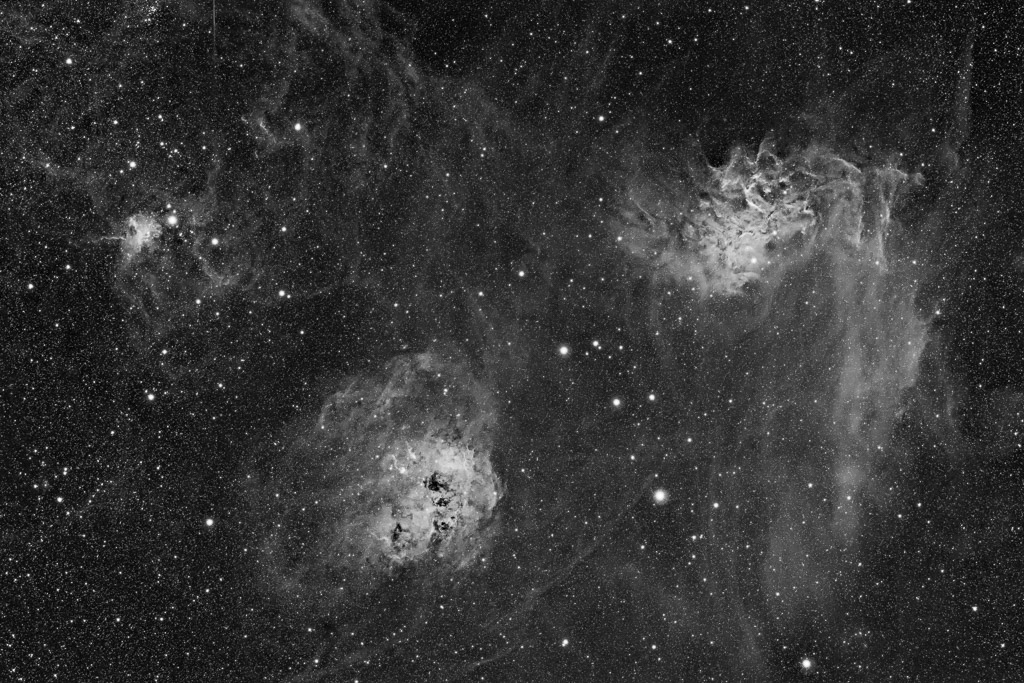The Cygnus’ Crescent: A Prominent Feature of Summer Evenings
Cygnus, also known as the Swan, is a constellation that dominates the summer nights with its abundance of bright deep-sky objects. Among its many celestial wonders, the Crescent Nebula (NGC 6888) stands out as a beautifully intricate and bubble-like Wolf-Rayet nebula. While it may pose a challenge for visual observers, it’s a dream come true for deep-sky imagers.
The Crescent Nebula owes its stunning appearance to the fierce stellar wind emanating from the massive Wolf-Rayet star, WR 136, located at its center. This wind sculpts the nebula’s complex filamentary structure as it collides with slower-moving gas previously expelled by the star during its red giant phase.
Finding the Crescent Nebula in the vast expanse of Cygnus can be a daunting task for those unfamiliar with the constellation. However, once you recognize the shape of the “Northern Cross,” Cygnus’ main asterism or star pattern, locating the nebula becomes easier. Deneb, one of the fabled “Summer Triangle” stars, marks the tail of the Swan, while Sadr lies at the intersection of the Cross. By continuing in the same direction away from Sadr, after 2.7 degrees, you will arrive at NGC 6888. Look for a small triangle of seventh-magnitude stars lying just to the east. In late August, the Crescent Nebula reaches its highest point in the sky, almost at the zenith around 11 pm BST.
To observe the Crescent Nebula, a 150mm (six-inch) telescope operating at a magnification of around 100x should be sufficient to reveal the brightest part of this elliptical-shaped nebula. It appears as a seven-arcminute-long and one-arcminute-wide arc on its northeastern side, oriented from northwest to southeast (position angle 215 degrees). However, a telescope with an aperture of 200-250mm (eight to ten inches) will provide better results. The entire Crescent Nebula spans 20 x 10 arcminutes and is located approximately 4,700 light years away, giving it a physical diameter of 25 light years.
To enhance the contrast between the nebula and the sky background, using an O-III or UHC narrowband filter is highly recommended. This accessory will make the nebula “pop” into view, revealing its intricate details.
Wide field images of the Crescent Nebula demonstrate that it is immersed in and surrounded by hydrogen-alpha emission, adding to its overall beauty and complexity.
In conclusion, the Crescent Nebula in Cygnus is a stunning deep-sky object that presents a challenge for visual observers but is a favorite target for deep-sky imagers. Its intricate structure, sculpted by the fierce stellar wind of a massive Wolf-Rayet star, makes it a mesmerizing sight. With the right equipment and knowledge of its location within Cygnus, observers can marvel at the beauty of this celestial wonder.
